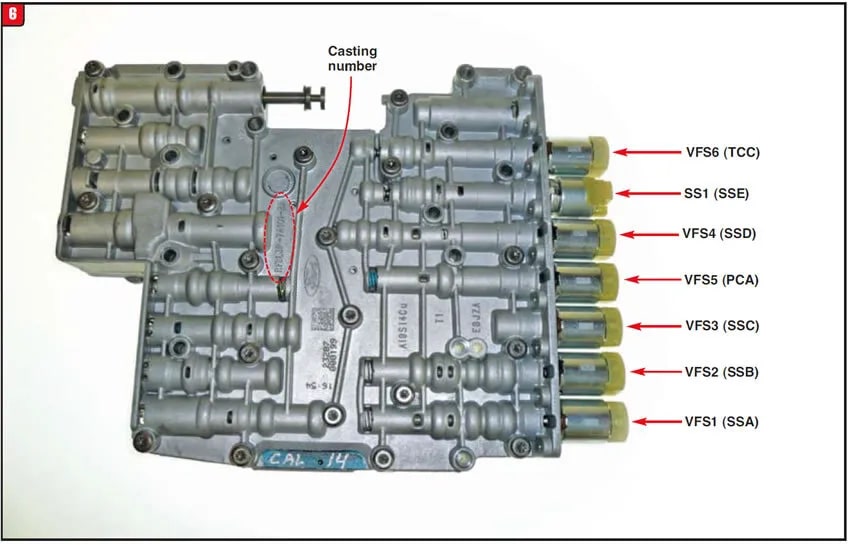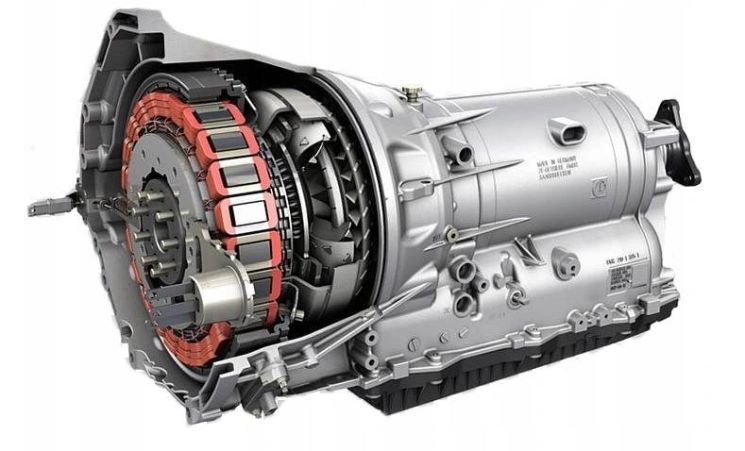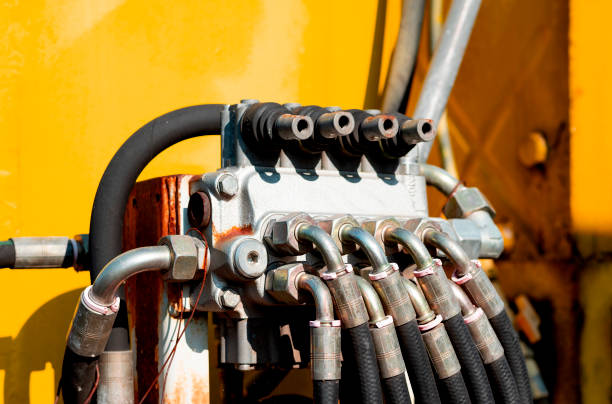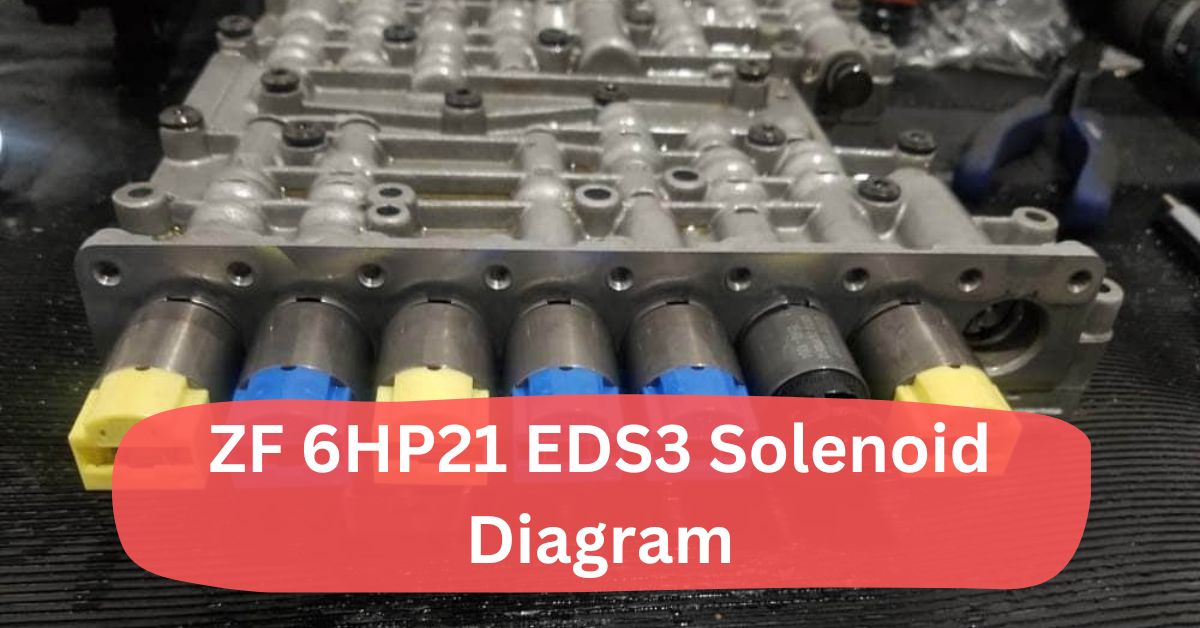The ZF 6HP21 EDS3 solenoid diagram plays a crucial role in the functioning of the ZF 6HP21 transmission. This advanced automatic transmission system, used in various modern vehicles, includes solenoids that control the hydraulic circuits within the transmission.
Understanding the ZF 6HP21 EDS3 solenoid diagram helps in diagnosing and replacing solenoids when necessary. This article will guide you through the components and functions of the solenoids within this system and provide a detailed overview of the ZF 6HP21 EDS3 solenoid diagram.
Introduction to the ZF 6HP21 Transmission:
The ZF 6HP21 is a six-speed automatic transmission developed by ZF Friedrichshafen AG. It is commonly used in high-performance vehicles, especially luxury cars like BMW, Audi, and Jaguar. The transmission uses a series of solenoids to manage its shifting process, making it highly efficient and smooth.
In the ZF 6HP21 transmission, the EDS3 solenoid is one of the key components that regulate hydraulic pressure, controlling the clutch operations and shift timings. The ZF 6HP21 EDS3 solenoid diagram shows the location and configuration of the solenoids, making it essential for repair and troubleshooting.
Overview of the ZF 6HP21 EDS3 Solenoid Diagram:

The ZF 6HP21 EDS3 solenoid diagram visually represents the positioning and relationship of the solenoids within the transmission system. These solenoids are typically responsible for controlling hydraulic pressure in various parts of the transmission, which in turn governs gear shifts.
Key Components in the ZF 6HP21 EDS3 Solenoid Diagram:
- EDS3 Solenoid: This solenoid is responsible for regulating hydraulic pressure to control clutch engagement and shifting operations. The ZF 6HP21 EDS3 solenoid diagram indicates its precise location within the valve body.
- O-Rings: The O-rings seal the solenoids to prevent leakage. The ZF 6HP21 EDS3 solenoid diagram shows the specific locations where these O-rings are installed.
- Valve Body: The valve body is the brain of the transmission, housing the solenoids and controlling the hydraulic flow. The ZF 6HP21 EDS3 solenoid diagram details the relationship between the solenoids and the valve body.
- Hydraulic Circuits: These circuits are controlled by solenoids and are critical for directing hydraulic fluid to various parts of the transmission. The ZF 6HP21 EDS3 solenoid diagram outlines how the EDS3 solenoid affects these circuits.
Functions of the ZF 6HP21 EDS3 Solenoid:
The EDS3 solenoid has several key functions within the ZF 6HP21 transmission:
- Regulation of Hydraulic Pressure: The EDS3 solenoid controls the hydraulic pressure required to engage clutches and bands. This ensures smooth shifting and optimized performance.
- Shift Timing: The solenoid is critical in determining the timing of gear shifts. By controlling the hydraulic pressure, it ensures that shifts happen at the appropriate engine speeds and load conditions.
- Smooth Transition Between Gears: With the precise control provided by the EDS3 solenoid, the transmission can shift smoothly without jerking or slipping, as illustrated in the ZF 6HP21 EDS3 solenoid diagram.
Common Issues with the ZF 6HP21 EDS3 Solenoid:
While the ZF 6HP21 is known for its reliability, issues can arise over time, particularly with the solenoids. Understanding the ZF 6HP21 EDS3 solenoid diagram can help diagnose these problems.
1. Solenoid Failure:
Solenoid failure can result in improper gear shifts or failure to shift altogether. The ZF 6HP21 EDS3 solenoid diagram is essential for locating and replacing faulty solenoids.
2. Leaking O-Rings:
Worn or damaged O-rings can cause hydraulic fluid leaks, affecting the performance of the solenoids. The ZF 6HP21 EDS3 solenoid diagram provides insight into the specific locations where O-rings are placed, making it easier to identify and replace them.
3. Hydraulic Pressure Issues:
If the EDS3 solenoid is malfunctioning, it may not regulate hydraulic pressure correctly, leading to harsh or delayed shifts. The ZF 6HP21 EDS3 solenoid diagram helps pinpoint the solenoid responsible for regulating pressure.
Replacing the ZF 6HP21 EDS3 Solenoid:
Replacing the EDS3 solenoid in the ZF 6HP21 transmission requires careful attention to the solenoid’s location as shown in the ZF 6HP21 EDS3 solenoid diagram. Here is a brief overview of the replacement process:
1. Disassemble the Valve Body:
First, the valve body must be removed from the transmission. The ZF 6HP21 EDS3 solenoid diagram provides clear guidance on the layout of the solenoids within the valve body.
2. Remove the Faulty Solenoid:
Using the ZF 6HP21 EDS3 solenoid diagram, locate the faulty solenoid and carefully remove it. Be sure to inspect the O-rings for wear and tear during this step.
3. Install the New Solenoid:
Once the faulty solenoid has been removed, install the new solenoid in its place, following the positioning shown in the ZF 6HP21 EDS3 solenoid diagram.
4. Reassemble the Valve Body:
After installing the new solenoid, reassemble the valve body and ensure all connections are secure. The ZF 6HP21 EDS3 solenoid diagram should be referenced to ensure proper alignment and connection of the solenoids.
Importance of the ZF 6HP21 EDS3 Solenoid Diagram for Technicians:
The ZF 6HP21 EDS3 solenoid diagram is an invaluable tool for automotive technicians working on ZF transmissions. It provides a clear and detailed view of the transmission’s solenoids, helping technicians diagnose issues and make necessary repairs.
Whether replacing a solenoid or troubleshooting hydraulic issues, the ZF 6HP21 EDS3 solenoid diagram is crucial for accuracy and efficiency.
Detailed Analysis of Solenoid Functions in the ZF 6HP21 Transmission:
The ZF 6HP21 EDS3 solenoid diagram is critical for understanding how each solenoid impacts the overall operation of the transmission. Each solenoid in the ZF 6HP21 transmission has a unique role, and their precise functions are detailed in the ZF 6HP21 EDS3 solenoid diagram.

For example, the EDS3 solenoid specifically manages the pressure required for various clutch applications. This solenoid’s role is crucial in maintaining the balance between clutch engagement and disengagement, ensuring smooth transitions between gears.
By examining the ZF 6HP21 EDS3 solenoid diagram, technicians can determine how each solenoid interacts with the hydraulic system, affecting the overall performance and responsiveness of the transmission.
The Impact of Solenoid Malfunctions on Transmission Performance:
When solenoids in the ZF 6HP21 transmission malfunction, the effects can be detrimental to vehicle performance. The ZF 6HP21 EDS3 solenoid diagram helps diagnose these issues by providing a visual representation of where each solenoid is located and how they operate.
For instance, a malfunctioning EDS3 solenoid can lead to erratic shifting, where gears may engage too harshly or fail to engage at all. This can result in a jerky driving experience or even a complete failure to shift, affecting the vehicle’s drivability and safety.
Understanding the ZF 6HP21 EDS3 solenoid diagram allows technicians to quickly identify which solenoid is malfunctioning and address the issue before it leads to more severe transmission problems.
The Importance of Accurate Solenoid Replacement:
Accurate replacement of solenoids is crucial for the proper functioning of the ZF 6HP21 transmission. The ZF 6HP21 EDS3 solenoid diagram plays a vital role in this process by providing the exact locations and configurations for each solenoid.
Incorrect installation can lead to improper hydraulic pressure regulation, which may cause inefficient shifting or even damage to the transmission components. By following the ZF 6HP21 EDS3 solenoid diagram, technicians ensure that each solenoid is positioned correctly and that all connections are secure. This attention to detail helps maintain the transmission’s performance and longevity, reducing the likelihood of future issues.
Understanding the Relationship Between Solenoids and Transmission Control Modules:
The ZF 6HP21 transmission operates with a sophisticated control module that interacts with the solenoids to manage shifting and hydraulic pressure. The ZF 6HP21 EDS3 solenoid diagram provides insight into how the solenoids communicate with the transmission control module (TCM).
Each solenoid receives electrical signals from the TCM, which directs them to adjust hydraulic pressure based on driving conditions. Understanding this relationship is crucial for diagnosing problems related to shifting performance or hydraulic pressure.
The ZF 6HP21 EDS3 solenoid diagram helps technicians understand how the solenoids are connected to the TCM and how their performance can impact the transmission’s overall operation. This knowledge is essential for effective troubleshooting and ensuring that the transmission functions smoothly.
Detailed Examination of Solenoid Replacement Procedures:
Replacing solenoids in the ZF 6HP21 transmission involves more than just swapping out faulty components; it requires precise procedures to ensure correct installation. The ZF 6HP21 EDS3 solenoid diagram is instrumental in guiding technicians through this process.
Before beginning the replacement, it’s crucial to accurately identify the solenoid type and its specific location as depicted in the diagram. This step ensures that the correct solenoid is replaced. During replacement, technicians must carefully remove the old solenoid without damaging surrounding components.
The ZF 6HP21 EDS3 solenoid diagram shows the exact positioning of the solenoids, which helps in aligning the new solenoid properly. Additionally, the proper torque specifications for securing the solenoids are often outlined in service manuals and complemented by the diagram, ensuring a secure fit that prevents leaks or malfunctions.
Hydraulic Flow and Solenoid Impact:
The ZF 6HP21 EDS3 solenoid diagram provides an in-depth view of how solenoids influence hydraulic flow within the transmission. Each solenoid regulates specific hydraulic passages, which are crucial for controlling the transmission’s various operations.

For example, the EDS3 solenoid directly controls the hydraulic pressure sent to different clutches and bands, affecting their engagement and disengagement. The diagram helps technicians understand how each solenoid’s operation affects the overall hydraulic flow and pressure distribution.
This understanding is vital when diagnosing issues related to inconsistent shifting or slipping gears, as improper hydraulic flow can significantly impact transmission performance. By following the ZF 6HP21 EDS3 solenoid diagram, technicians can better assess and correct hydraulic flow issues.
The Role of Diagnostic Tools in Interpreting the Solenoid Diagram:
Modern diagnostic tools are often used in conjunction with the ZF 6HP21 EDS3 solenoid diagram to analyze and troubleshoot solenoid-related issues. These tools can read error codes and monitor solenoid performance in real-time, providing valuable data that complements the visual information from the diagram.
For instance, a diagnostic tool might reveal a specific solenoid’s malfunction or indicate irregular pressure readings, which can be cross-referenced with the ZF 6HP21 EDS3 solenoid diagram to pinpoint exact issues.
By combining diagnostic tool data with the diagram, technicians can more accurately diagnose problems and make informed decisions about repairs or replacements. This integrated approach enhances the efficiency and accuracy of transmission maintenance and repair.
Solenoid Testing and Maintenance Procedures:
Regular testing and maintenance of solenoids are essential to ensure the ZF 6HP21 transmission operates smoothly. The ZF 6HP21 EDS3 solenoid diagram assists in this process by providing detailed information on the solenoids’ locations and their interactions with other transmission components.
Testing procedures typically involve checking the electrical resistance and operation of each solenoid to ensure they meet manufacturer specifications. The diagram helps technicians understand the connections and paths for these tests, making it easier to diagnose faults.
Regular maintenance, guided by insights from the ZF 6HP21 EDS3 solenoid diagram, includes inspecting and replacing O-rings to prevent leaks and ensuring that solenoids are functioning correctly to maintain optimal transmission performance.
Conclusion:
Understanding the ZF 6HP21 EDS3 solenoid diagram is essential for anyone working on or maintaining a ZF 6HP21 transmission. This diagram not only helps in diagnosing problems but also assists in the proper replacement of solenoids and related components like O-rings. By familiarizing yourself with the ZF 6HP21 EDS3 solenoid diagram, you can ensure the smooth operation and longevity of the transmission system.
In summary, the ZF 6HP21 EDS3 solenoid diagram is an indispensable resource for transmission repair, offering detailed insights into solenoid locations and functions. With this knowledge, technicians can maintain and repair ZF 6HP21 transmissions more effectively, ensuring optimal performance for the vehicles using this advanced system.
